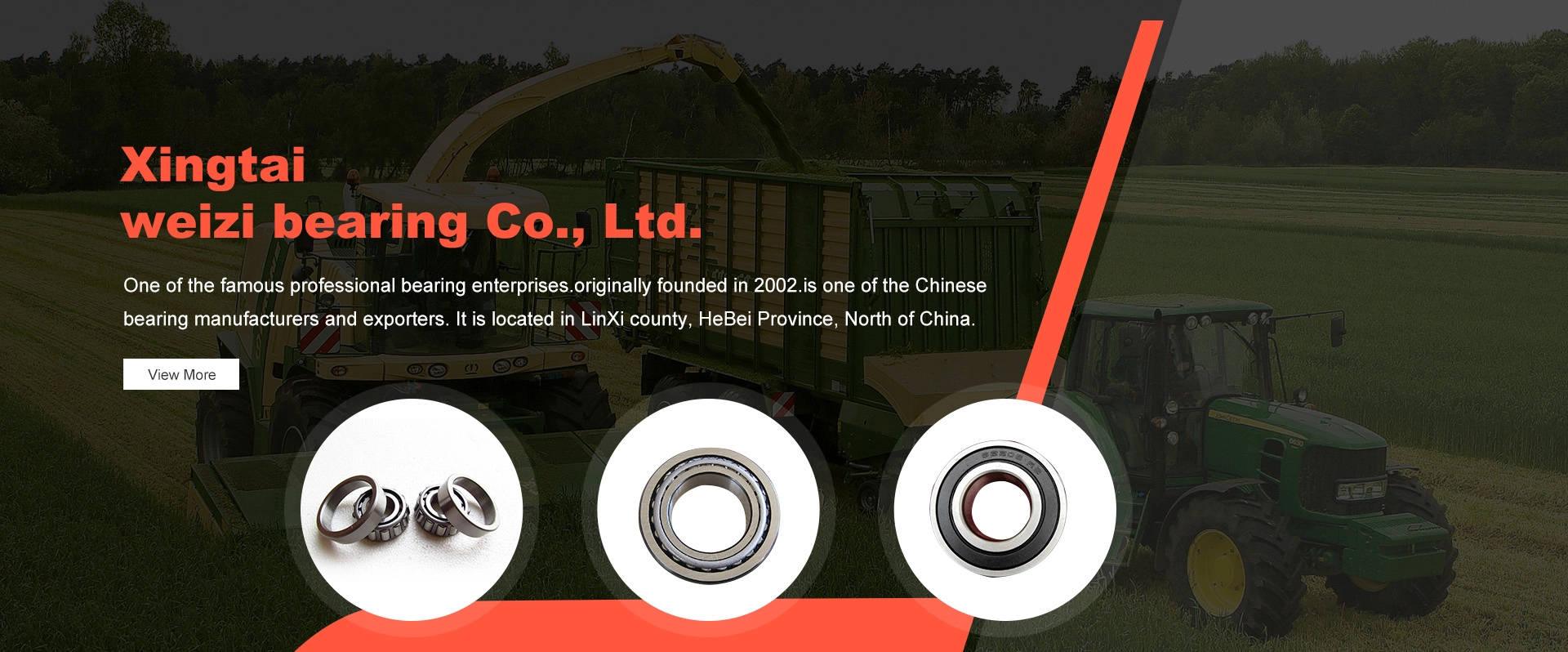
11 月 . 04, 2024 11:03 Back to list
Types and Applications of Deep Groove Ball Bearings for Various Industries
Understanding Deep Groove Ball Bearing Types
Deep groove ball bearings are among the most commonly used types of rolling bearings. They are found in a wide array of applications, from household appliances and electric motors to aerospace components and automotive systems. Their design allows for the support of radial and axial loads, making them particularly versatile. This article explores the types, characteristics, and applications of deep groove ball bearings.
Basic Structure and Design
A deep groove ball bearing consists of an outer race, an inner race, a set of balls, and a cage (or separator) that holds the balls in place. The most defining feature of this bearing type is the deep grooves on both the inner and outer races. This design allows the bearing to accommodate a higher degree of angular misalignment and provides improved load-carrying capacities.
The standard design can vary in terms of the materials used, lubrication methods, and shielding options. For instance, bearings can be made from chrome steel, stainless steel, or ceramic, while the cage may be composed of steel, brass, or plastic. The choice of materials and construction affects the bearing's strength, durability, and suitability for different operating environments.
Types of Deep Groove Ball Bearings
1. Single-Row Deep Groove Ball Bearings This is the most common type and consists of a single row of balls. They provide high radial load capacity and are suitable for applications where axial loads are also present. Single-row deep groove ball bearings are widely used in motors, gearboxes, and many other types of machinery.
2. Double-Row Deep Groove Ball Bearings As the name suggests, double-row deep groove ball bearings contain two rows of balls, allowing them to handle higher loads compared to their single-row counterparts. Due to their design, these bearings can manage axial loads in both directions, making them ideal for applications such as industrial equipment and heavy machinery.
deep groove ball bearing types

3. Angular Contact Ball Bearings While technically falling under the broader category of ball bearings, angular contact ball bearings are designed to accommodate both axial and radial loads. This type can be considered a variation of deep groove bearings when they are designed to withstand high axial loads and feature a specific contact angle. They are commonly used in more demanding applications, such as electric motors and machine tools.
4. Shielded and Sealed Deep Groove Ball Bearings Shielded deep groove ball bearings have metal or rubber shields on one or both sides to protect the internal components from contaminants and retain lubrication. Sealed bearings, on the other hand, feature rubber seals that offer a more robust barrier against dust and moisture. Both options are crucial in applications operating in challenging environments, as they extend the bearing's operational life and performance.
5. High-Speed Deep Groove Ball Bearings Specifically designed for high-speed applications, these bearings are engineered to minimize friction and heat generation. They often feature special materials and designs that improve their performance at elevated speeds. Industries such as aerospace, automotive, and precision engineering commonly utilize high-speed deep groove ball bearings.
Applications of Deep Groove Ball Bearings
The versatility of deep groove ball bearings makes them suitable for numerous applications. In the automotive industry, they are commonly found in wheel hubs, transmissions, and engine components. In electric motors, they provide smooth rotational motion, ensuring efficiency and performance. Additionally, deep groove ball bearings are utilized in household appliances, such as washing machines and refrigerators, where reliability and low maintenance are essential.
Conclusion
Deep groove ball bearings are integral to modern machinery, offering a combination of versatility, efficiency, and durability. Understanding the different types—from single-row to sealed variants—helps engineers and manufacturers choose the right bearing for their specific applications. Whether it’s in a high-speed motor or a simple household appliance, deep groove ball bearings continue to play a pivotal role in enhancing performance and reliability across various industries. As technology advances, the development of specialized deep groove ball bearings will likely continue, further expanding their applications and effectiveness in supporting the machinery of tomorrow.
Latest news
-
Unlocking Efficiency with Spherical Roller Bearings
NewsOct.29,2024
-
The Ultimate Guide to Thrust Ball Bearings
NewsOct.29,2024
-
The Power of Thrust Roller Bearings: Engineered for Excellence
NewsOct.29,2024
-
The Power of Deep Groove Ball Bearings for Your Application Needs!
NewsOct.29,2024
-
The Power and Performance of Cylindrical Roller Bearings
NewsOct.29,2024
-
High-Quality Ball Bearing Manufacturing Machines
NewsOct.29,2024
